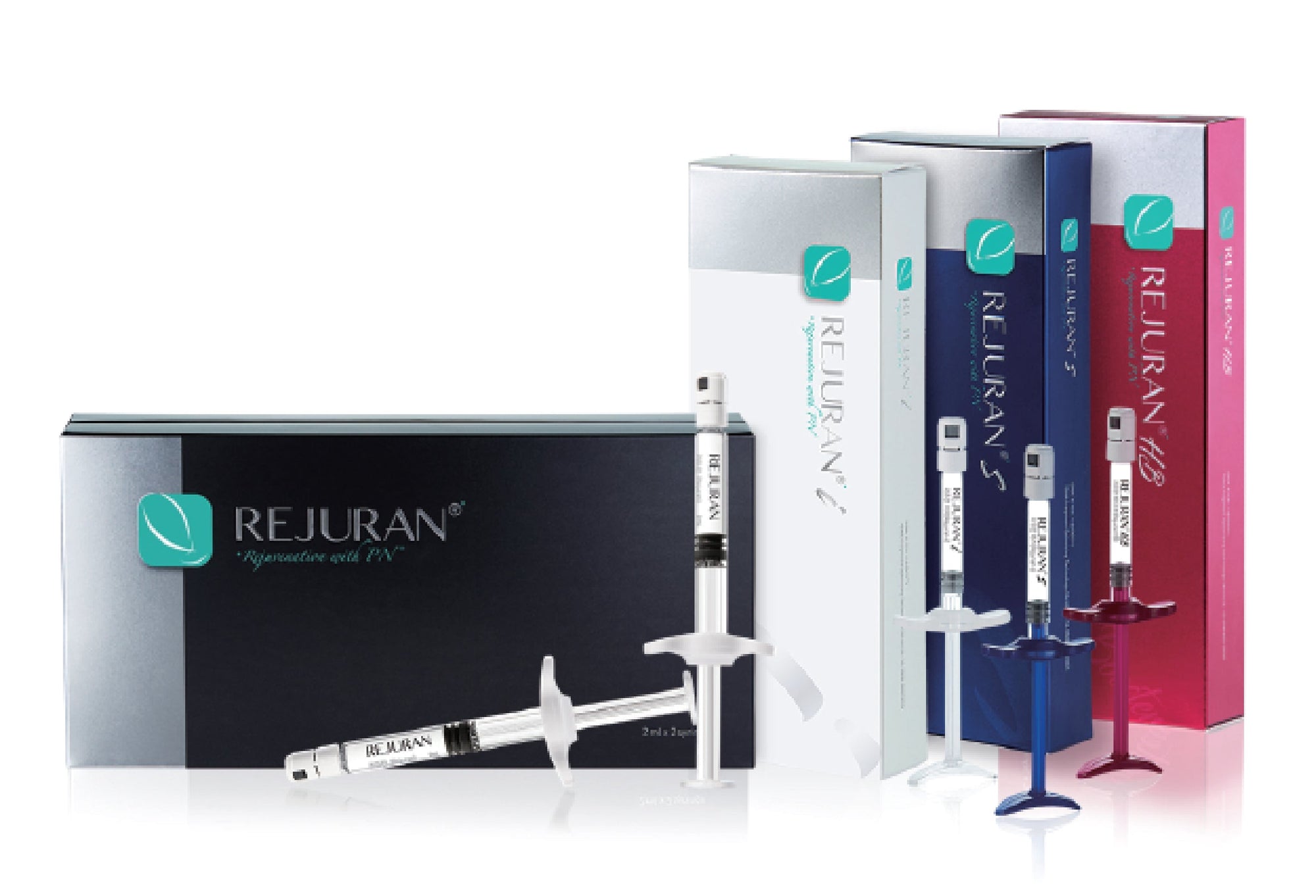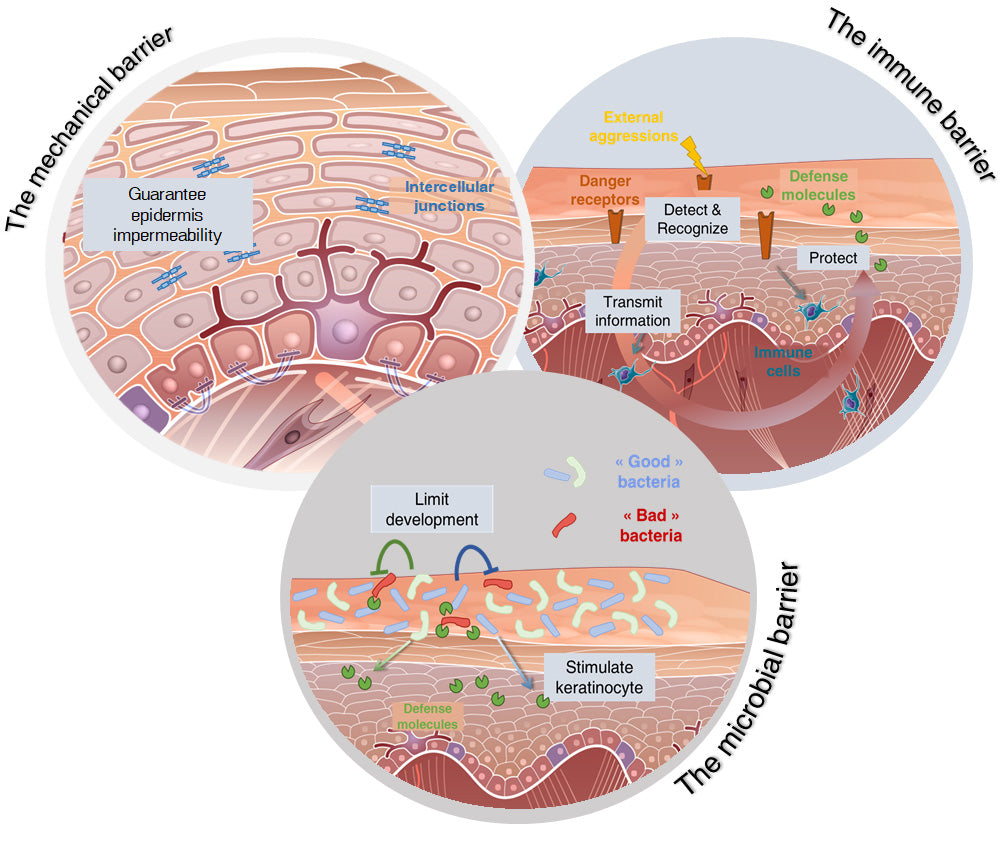Skin is essential to our overall health and wellbeing. Healthy skin acts as a barrier between the outside world and the inside of the body and is our best and first defence against:

As the outermost layer of the skin, the horny layer plays a pivotal role in protecting the body from the environment and limiting the amount of water lost from the epidermis.
Temperature:
It contains natural moisturising factors (NMFs) – derived from sebaceous oils of the horny layer including lactic acid and urea. These bind with water and help to maintain skin’s elasticity, firmness and suppleness. If these factors are depleted, skin loses moisture. When moisture of the horny layer falls to below 8 to 10%, it becomes rough, dry and prone to cracking.
When the skin is regularly exposed to UV rays, melanin production in the basal layer increases, skin thickens to protect itself and hyperpigmentation can occur.
The fat cells in the subcutis also insulate the body from cold and heat.
Pressure/Friction:
Again, the epidermis forms the first layer of defence. The fat cells in the subcutis provide padding that acts as a shock absorber, protecting the muscle tissue and fascia (the fibrous tissue that surrounds muscles) beneath.
When skin is exposed to certain external stimuli the horny layer thickens, for example when calluses form on hands or feet that are exposed to repeated rubbing
Barrier - First Line of Defence: The buffer capacity of the hydrolipid film and the protective acid mantle helps to protect the body from harmful alkaline based chemicals. Read more in factors that influence skin.
The horny layer of the epidermis and its protective acid mantle form a barrier against bacteria and fungi. If something passes this first line of defense, skin’s immune system reacts.
The ultimate multi-tasker, skin plays many other roles essential to our health and wellbeing:
- Skin perspires to cool the body and contracts the vascular system in the dermis to conserve heat.
- Nerve endings in skin make it sensitive to pressure, vibration, touch, pain and temperature.
- Skin is able to repair wounds.
- The fat cells in the subcutis serve as important storage units for nutrients. When the body needs them, they pass into the surrounding blood vessels and are carried to where they are required.
Skin also plays an important psychological role. As the most visible indicator of health, the condition of our skin affects how we feel about ourselves and how others view us. When skin is healthy and problem-free it is able to do its job better and we feel more comfortable and confident.
What happens when skin is damaged?
Healthy, problem-free skin is even in colour, smooth in texture, well hydrated and appropriately sensitive to touch, pressure and temperature. When skin’s natural barrier is disturbed, its protective function and healthy appearance are compromised:
- It loses moisture and elasticity and can look and feel dry, rough, cracked and/or saggy.
- It becomes increasingly sensitive to external influences (such as sun and temperature changes) and is particularly prone to infection.
Infected skin can become inflamed as inflammatory immune cells move in to try and repair the damaged barrier and heal the infection. In the case of conditions such as Atopic Dermatitis and an itchy scalp, specialist treatment is often needed to break the vicious cycle of repeated itching and further infection and to help regenerate skin’s natural barrier.
Skin has various regeneration and repair mechanisms. The basal layer ensures a steady renewal of the epidermis, through continual cell division:
- If an injury is confined to the uppermost skin layer, the damage (known as erosion) can heal without scarring.
- If the damage reaches the dermis and the basal membrane is affected (e.g. an ulcer) then scarring normally occurs.
Wound-healing follows several consecutive stages:
- Coagulating blood forms a membrane with a hard surface that sticks to the wound (a crust or scab).
- Dead and damaged cells and their connective tissues are broken down and dissolved by enzymes.
- Cells that protect the body by digesting harmful bacteria and dead cells become active. Lymphatic fluids flow into the wound.
- New cells – including capillary buds, connective tissues and collagen fibres – form in a process known as epithelisation.
This latter stage can be stimulated and supported by the application of topical products that assist healing (e.g. dexpanthenol).
Read more about the factors that influence skin health and about how to keep skin healthy in factors that influence skin, caring for skin on the body and a daily skincare routine for the face.


